The 6 most influential green cars in history
For the first 50 years of its life, the auto industry operated entirely free of any regulation.
Believe it or not, it wasn’t until the 1950s that all U.S. states even agreed on the size, shape, and mounting holes for license plates.
But starting in the 1960s, governments began to face up to the ill effects of motor vehicles on the environment. And like many such evolutions, the first seeds of change were sown in California.
Half a century later, the vast majority of global car markets now regulate tailpipe emissions not only of gases directly toxic to humans but also of carbon dioxide, a key component of climate change.
DON'T MISS: Nissan Leaf electric vs Toyota Prius hybrid: which is lower on cost, emissions?
But greener cars have always been with us—though they haven't always found long-term sales success.
So here’s our list of the six vehicles we consider the most important green cars over 130 years of automotive history. It took many long, contentious discussions to whittle down a long list of candidates to these six vehicles.
Undoubtedly, there will be readers who believe others should have been included. As the saying goes, your mileage may vary.
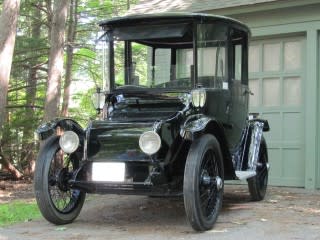
(1) Early 20th-century electric cars (Detroit Electric et al.)
This is not a single vehicle but a group of cars. Most of them followed similar templates, making them remarkably similar, and at the end, many were made by the same company.
The battery-electric vehicles from 1890 to about 1910 competed head-to-head with the gasoline and steam-powered vehicles of the day. Topping out at 30 mph or so, they were deemed by far the most civilized, smooth, and comfortable vehicles on the market—and hence most suitable for lady drivers.
When the electric self-starter arrived on the market in 1912, the superior range and speed of gasoline soon relegated these electric cars to the sidelines. With the Depression as the final blow, they vanished from the market by 1930.
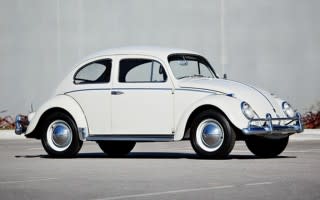
(2) Volkswagen Beetle
Just as the Ford Model T had, the VW Beetle introduced a whole new way of thinking about personal transportation. For Germans it was the car that put a battered post-war nation back on wheels.
But to Americans it was something more revolutionary: a small car that was cool. Smart, quirky, humorous ads from the Doyle Dane Bernbach agency urged Americans to "Think Small," and the Beetle’s legendary toughness and build quality made the choice sensible.
Starting in the early 1950s, VW required that its dealers invest in a stock of spare parts before they could receive a single new car to sell. That paid off at service time: no waiting for parts to be shipped.
As the '50s gave way to the '60s, the Beetle became cool—and its sibling, the VW Bus, became the preferred transport for surfers and hippies. But its major influence was to persuade Americans, steeped in decades of "Longer! Lower! Wider!" marketing, that small and quirky could be frugal without losing the fun.
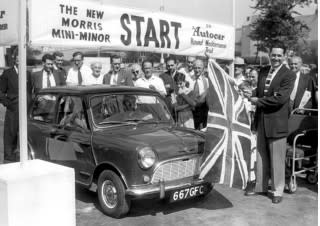
(3) 1959-2000 BMC Mini (nee Austin Se7en and Morris Mini-Minor)
Launched in the summer of 1959 by British Motor Corporation, then the UK’s largest automaker, the original Mini stemmed directly from the fuel rationing imposed by the 1956 Suez Canal Crisis.
Created by engineer Alec Issigonis, the Mini used a conventional 4-cylinder engine set sideways across its nose, driving the two front wheels.
Exactly 10 feet long, it fit four adults by devoting just 20 percent of its length to the powertrain—and the rest to the passenger cabin.
CHECK OUT: World's Third-Oldest Car Plant At 100 Years: Minis Still Rolling Off Line (Mar 2013)
When tuner John Cooper began modifying Minis that handily beat far larger and more powerful cars, a mystique was born.
And like the VW Beetle, the Mini had a classless appeal. The driver could be the grocer down the street…or a Beatle.
The original Mini stayed in production a staggering 41 years, though it was only a relic over its last 20 years. But more importantly, Issigonis' design set the template for virtually every small car built today.
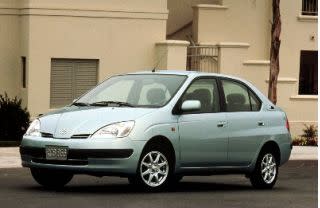
(4) 1997 Toyota Prius
Today, the Toyota Prius is—for better or worse—a cultural icon, one of the few cars to have had its own "South Park" episode. But its first generation was neither impressive to look at nor particularly enjoyable to drive.
The Prius emerged from an early 1990s research project at Toyota that aimed to cut fuel consumption in half for ecological reasons. It cleverly used electricity recaptured from otherwise wasted energy to supplement the torque of a small gasoline engine.
Electric motors acted as generators, charging a high-voltage battery pack via regenerative braking to recapture what would otherwise have been wasted as brake heat. The same motors then powered the car alone at low speeds, adding torque at higher speeds to supplement the output of a gasoline engine tuned for efficiency.
A sharp rise in gas prices as the 2004 Prius hit the market cemented its position as the most fuel-efficient car sold in the U.S. Four generations later, Toyota is the undisputed global leader in hybrid-electric vehicles. The Prius name means fuel efficiency worldwide, and the company is coming up on 10 million hybrids.
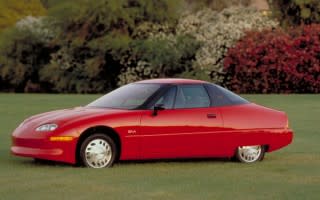
(5) 1998 GM EV1
California has always led the nation in regulating vehicle emissions. By the late 1990s, it had enacted a daring mandate that required automakers to deliver a certain percentage of zero-emission vehicles within the state.
By definition, these were pure electric cars, which required new charging stations to be located in public places. But General Motors was one of only two makers to design an electric car from scratch to meet the regulations. The result was the distinctive, high-tech EV1 two-seater, the only car ever sold as a "GM."
The EV1 had smooth, quiet, sporty acceleration, all the amenities of a normal car, and an advertised range of 70 to 90 miles on the lead-acid batteries of the day. But carmakers fought California's rules in court, arguing the technology was neither ready nor affordable. Ultimately, the state rolled back it sales rules.
GM took back and crushed its EV1s, a story that grew larger than life in the documentary "Who Killed the Electric Car?" GM's CEO at the time, Rick Wagoner, later said that ending the EV1 program was his biggest regret.
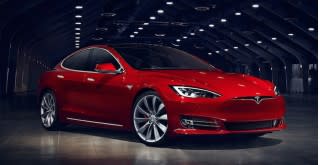
(6) 2012 Tesla Model S
It wasn’t the first modern electric car (that honor goes to the Nissan Leaf), and it’s never been the least expensive. But the Tesla Model S will go down in history as the vehicle that showed electric cars could be not only practical but also desirable, sexy, and stunningly fast.
It was preceded by the low-production Tesla Roadster, adapted from a two-seat Lotus sports car. The Roadster showed that thousands of commodity lithium-ion cells could be harnessed together in a giant battery to provide amazing power and acceleration, with a range of more than 200 miles.
CHECK OUT: Tesla Model S P100D does 0-60 in 2.5 s, quarter-mile in the 10s
Translating that to a large, luxurious, four-door sedan (it's actually a hatchback) was unthinkable, until Tesla did it. But then everything about Tesla Motors is unlikely, from its tweet-happy CEO Elon Musk to its manufacturing plant in San Francisco's Bay Area, one of the least industry-friendly locations in the U.S.
Four years after the Model S launched, every German luxury maker is rushing to develop the same kind of car (only better, they say). Meanwhile, Tesla has stolen some of their best and most committed customers—and now it is gearing up to enter the mass market with its $35,000, 200-mile Model 3.
NOTE: This article was adapted from a longer piece, The 12 most influential green cars in history, that ran on Green Car Reports this past June.

 Yahoo Autos
Yahoo Autos 
